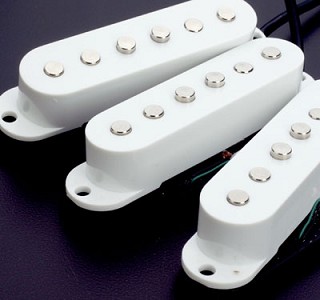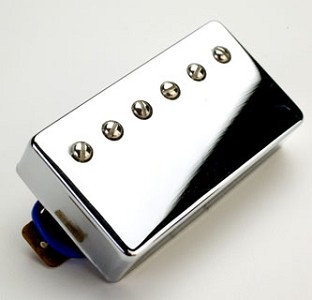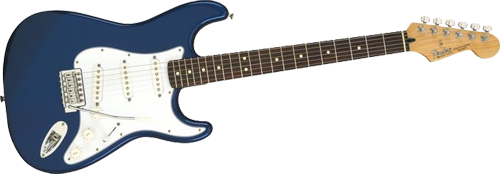 I’ve been approached by several friends this year who want to buy a guitar, and I know the arrival of Rocksmith 2014 has something to do with it. I am happy and proud to be The Guitar Whisperer for them, but I realized that my advice has slowly grown over a series of emails to the point where I felt it was worth posting publicly. My goal is to tell you what you need to know to make a buying decision that’s right for you without slipping into too much jargon or cork-sniffery. So with that in mind…
I’ve been approached by several friends this year who want to buy a guitar, and I know the arrival of Rocksmith 2014 has something to do with it. I am happy and proud to be The Guitar Whisperer for them, but I realized that my advice has slowly grown over a series of emails to the point where I felt it was worth posting publicly. My goal is to tell you what you need to know to make a buying decision that’s right for you without slipping into too much jargon or cork-sniffery. So with that in mind…
The Very Basics
When you hear an electric guitar, the sound you hear is a combination of four primary elements: the pickups, the wood, the amplifier, and the person playing. And as a newbie (or even an oldie), no matter what you buy or how much it costs, the weakest link is probably going to be you. Whether you learn by ear, with a tutor, through a computer game, or something else, it’s going to take some time. Be inspired by your heroes and strive to make the sounds with your hands that you hear in your head, but don’t worry about the subtleties just yet.
Most people are inspired to learn to play guitar because of something they hear or a band they really like. Just getting the same guitar as your hero or buying the same amp won’t give you what you need to sound like them, but I do recommend digging a little bit on Google, finding photos or videos of the bands that you like, and noticing what kind of guitars they play. That way, when you get as far as trying to make similar sounds, your gear will hopefully be matched to the task.
Pickups & Wood
I think the biggest factor in an electric guitar’s sound, at least for a beginner, is the type of pickups. Different pickups are designed to make different sounds. The thin ovals (usually with six silver dots) are single-coil pickups — bright, snappy, with an accent on treble frequencies. These are most famously associated with the Fender Stratocaster, and are sometimes criticized as “thin” or too harsh for some people. They can sometimes pick up 60Hz hum from magnetic fields, but modern takes on this classic design have helped reduce that. Single-coils are generally versatile all-rounders, but most notable for use in pop, rock, country, and essential for funk. Examples include 70s-to-now Clapton, Buddy Holly, Hendrix, Dinosaur Jr, Nirvana, The Smiths, Green Day…all single coils, though varying designs make some sound “thicker” than others.
The pickups that look like two of single-coils lashed together, or the pickups that look like chrome rectangles with six screws on top are humbuckers — because they “buck the hum” that single-coils sometimes pick up. They generally offer a warmer, thicker sound and are identified with the Gibson Les Paul model — think Jimmy Page in Zeppelin, Pearl Jam, Slash, Van Halen, 60s Clapton, basically every metal guy ever, but also many jazz dudes. They can be criticized as “muddy” when they sound too dark, but they are great for delivering the distorted crunch of heavy rock.

Volume and tone knobs
Almost all guitars have knobs on the instrument itself so you can make the tone darker or brighter, and some guitars come with a mix of single-coils and humbuckers (two single-coils and one humbucker is pretty common). So while it’s a primary factor in the sounds you can create, even pickup choice is not a permanent commitment — they can always be swapped out, and you can get humbuckers that fit in the space of a single-coil and vice-versa. Still, your ears know what you like, so trust them. Take a look at the musicians you most want to emulate or you like their sounds and see whether they are primarily playing SCs or HBs.

The Taylor T5 is a hollowbody electric
There are more differences from here, of course. Solidbody electrics (VH, Page, Cobain) and hollowbody or semi-hollowbody electrics (Oasis, Chuck Berry, Brian Setzer) will make a difference in the tone even more, but they’re a bit more fragile and somewhat specialized. Most new players think of a solidbody electric when they think of “rock guitar,” and it’s certainly what I’d recommend for starting out.
The guitar’s wood certainly matters and affects its tone, but not as much as the pickups for a newbie. Woods like alder, mahogany, or ash are traditionally used for the body; nearly all necks are maple (it’s strong, easy to work with, and plentiful); the fingerboard can be maple (brighter) or rosewood (mellower). In budget or starter instruments, you will also find woods like basswood, agathis, and even pine. I don’t really like agathis, but basswood, to my ear, sounds great in an electric guitar. If you want to go down the rabbit hole, read this, but honestly, you don’t need to right now — you know the basics when it comes to the kinds of guitars that will be in your price range.
A Realistic Budget

Kat’s $180 miracle, made in China
Now that you sort of know what you are looking at and what you are looking for, your budget is the next thing to consider. I am a guitar snob, but I also strongly believe that you are making an investment. I honestly believe that a good guitar can be found for $250 if you really look hard — but not for less, at least at street prices. Real “I like playing this every day and this is not a piece of crap/I give up but at least I will get something back for when I sell it” quality starts around $200, though you can go as high as $600 and still be in the realm of “good first guitar” instruments. Sometimes you will find that one super cheap instrument that happens to have been made on a good day — Kat has a $180 bass that we both adore, but we never would have bought it unless we both played it first (and we’ve also added some upgrades to make it better still). But generally, you do get what you pay for in the world of guitar. You don’t need to spend a ton, but if the instrument isn’t well made or doesn’t feel good to you when you play it, you will not want to keep playing. (Keep this in mind when you see those “beginner kits” with a guitar, amp, and accessories all in one box for $99. It looks good if you look fast, but I do not recommend that approach, even as a first step.)
Starter instruments are either made in Mexico, Korea, or Indonesia, which are the hotbeds of cheap guitar labor (and China is coming on strong, with quality far better than expected). Mexican instruments generally cost a little bit more but I have found they are worth it. American-made or Japanese-made guitars generally go for double the cost of a starter brand. For a student buying their first guitar, I don’t recommend going that big unless you happen to get a great deal through a friend or Craigslist or something; it’s usually not worth the investment until you know if you like playing guitar at all. But if one falls into your lap, by all means, enjoy it!
Play It In Person
There are lots of places online to buy instruments, but when you don’t know what you want, any hands-on time is invaluable. Head to the local music store and start picking up things and playing — even if you cannot play.
Regardless of brand, pickups, or even budget, your hands will tell you what you need to know. Don’t worry about playing songs; just put your hand around the neck. The neck carve will vary dramatically between manufacturers and designs; do you like how it feels in your hand? Some necks are feature a glossy urethane finish on them, while others have a duller satin look — which one feels better, if either? Put a strap on the guitar and feel how it hangs from your body; sit down and put it on your knee. Does it fit you? Some things will feel awkward when you do them the first time, but ergonomics is something you cannot change, whereas everything else — pickups, tuners, amplifier tone — can all be altered. But if the neck feels like a club instead of an extension of your hand, or if it feels like a slab of wood that you have to fight in some way to hold, you will NOT want to play that guitar. I urge you to judge ergonomics and feel above all other factors.
Another element that affects your ergonomics is the guitar’s setup. If you’ll allow a quick dive into jargon, a guitar’s action is the height of the strings relative to the fretboard; if they’re too high, it will be difficult to play, but too low and it will make buzzing sounds. Several small adjustments to different parts of the guitar contribute to the action, and a good technician can set up a guitar for maximum playability for $50 to $75. Don’t assume every guitar you play in a shop will be perfectly set up, but don’t reject something that might just need a tweak if you are digging the other elements. If you are haggling, it’s not unreasonable to ask for a guitar to be set up before you bring it home.
Once you’ve done some hands-on research, look around on Amazon, Musician’s Friend (which is owned by the same company as Guitar Center), Music 123, and American Musical to see just how many options are out there. Just don’t forget that there is probably a really great hard-working person trying to make a living at an independent music store in your neighborhood — give them a visit and check them out, too. They might make their living on lessons, but you never know what they might have in stock.
“What Should I Buy?”
The two primary brands in the electric guitar world are Fender and Gibson. They both came up with iconic designs and innovations in the 1950s which the extremely traditional world of guitar is still preserving and reinventing in equal measure. Both companies have a budget brand aimed at new players, so you get the look and design of the classics without the American-made sticker price. Gibson’s starter brand Epiphone has come a long way in quality since the 90s, as has Fender’s beginner brand Squier; quality is up dramatically from when I was learning to play, and I no longer have my old biases against these brands. That’s good, since most of your options between $250 and $350 at a store like Guitar Center or Sam Ash will be from those two companies. But as you probably already know, regardless of brand, always be wary of the cheapest guitar in the shop. It’s probably cheap for a reason.
Up to $300
I am happy to report that there are a few good options below $300 — and a few years ago, I might not have been willing to say that! We’re in a golden age of cheap starter guitars that aren’t terrible, so enjoy it!
The Epiphone Les Paul Special II features a Tune-o-Matic style bridge which can be properly intonated (I do not recommend “wraparound” bridges, as they make it harder to adjust the guitar’s playability). This model goes for $180 at Guitar Center (or you can get a slightly prettier version for $230). Watch for sales, and you will see the basic version drop to $150 — but check the used listings at GC and you will usually find it for $125 or even sub-$100. This is a fundamentally well-built guitar with zero frills, and its parts can be upgraded if you choose, but it’s a solid foundation at a price that frankly surprises me!
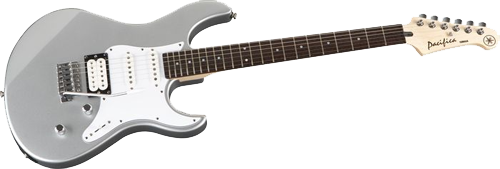
Pound for pound, one of the best values in all of guitardom is the Yamaha Pacifica. It’s not a flashy name-brand, but the Pacifica PAC112V gives you a mix of pickups for a bit of jangle and crunch, it looks like an adult guitar, it’s well made, it features a comfortable satin-finish neck, it comes in several colors, and it fits in universal cases/gig bags. It’s a do-everything legendary starter value at $300 and it gets my strongest endorsement.
That said, $300 is still a significant investment, and there are cheaper Pacificas out there. The absolute rock bottom $179 PAC012 is made of agathis, and for $20 more you can get it in alder, so between the two, I would go with the $199 PAC112J. But if it were really my decision and my money, I’d save up the extra $100 and get the upgraded 112V.
For $300, what are you not getting? A case — sometimes you will get a nylon “gig bag” with purchase, but more often you will not get any carrying case or protective case at all, so factor that in (cheapest you’ll find is $20, but $40 will get you something with some padding). You can also expect that some of the parts on starter or budget guitars to be cheaply made. The knobs are going to be plastic, and they may fall off from time to time. The tuners that hold the strings taut might slip and cause the guitar to go out of tune fairly often. The pickups might be noisy or the electronics might not be shielded. These are all things that you can replace or upgrade if they really bug you, but if any of those things sounds like a personal dealbreaker, you should simply save up for a guitar of higher quality.
$350 to $600
The Fender Stratocaster is utterly iconic and incredibly versatile, and Fender’s starter brand Squier covers a lot of classic ground with the Classic Vibe 60s Stratocaster. It’s easy to play, combines some of the best features of the beloved 1960s Strats, and it’s a solid value at $400. If you can afford $600, I recommend the Mexican-made Fender Standard Stratocaster, which comes with your choice of maple or rosewood fretboards, three single-coil or single-single-hum (often abbreviated as SSH) layouts, and plenty of colors. If you want the other iconic design, Gibson’s Epiphone makes the Les Paul Standard model for $420, which really hits the sweet spot. For $550, the Plus Top Pro features fancier wood and a “coil-tap” function, which means you can flip a switch and use just one of the two coils in that humbucker to make it function like a single-coil.
If the classic designs look a little “me too” for your tastes, you have some more aggressive and unusual options in this price range, too. For Fender, look Squier’s indie-flavored Vintage Modified Jazzmasters and Jaguars, both of which will run you $400. (Fender also makes updated versions of these models with humbuckers and less confusing switches for around $600.) On the Gibson-inspired side, check out the Epiphone G-400 Pro, based on Gibson’s SG. If you are into AC/DC or Black Sabbath, you’ll recognize this immediately. It’s got the coil-tap function (hence the Pro), and it streets for only $350. It’s lightweight, but beware if you are clumsy — the headstock is a little more fragile than some other guitars.
Other names worth checking out in the $300-$600 range include Ibanez, Schecter, and G&L’s Legacy line. There are many more out there — and of course, just as some cheap guitars are accidentally awesome, so to are lemons produced by established brands. Every guitar is a different piece of wood, built on a different day; even when mass-produced, they are unique. Two of the same guitar in the same shop may feel or sound different to you. Use the Force. Stretch out with your feelings.
Buying Used
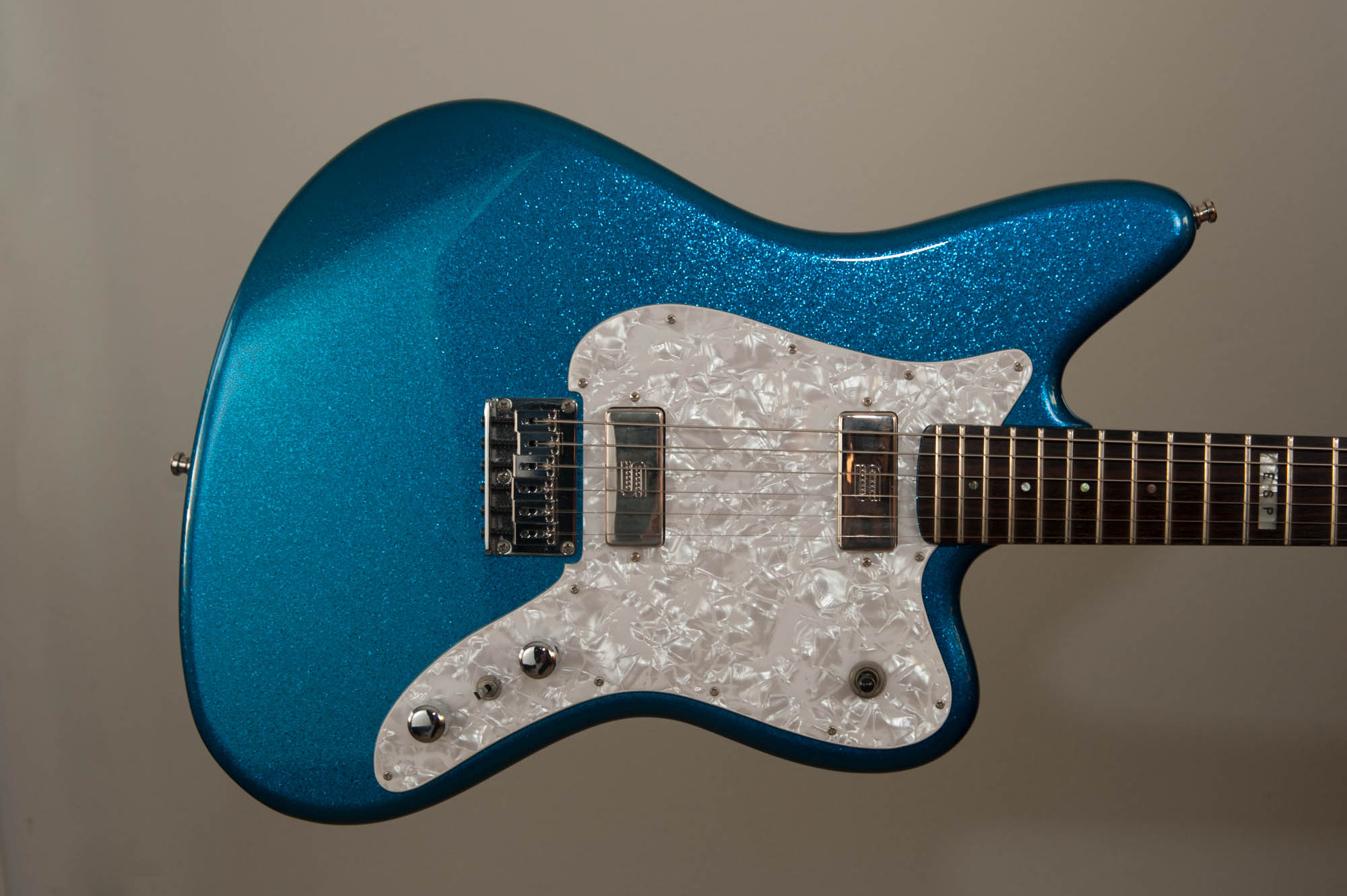
Most of my guitars, including this amazing Japanese ESP XJ-6, were bought used.
Consider it. A used American-made instrument can sometimes be found for the price of a new import instrument, and your local Guitar Center has dozens of used instruments for sale. Also, watch for sales on clearance items. Guitar companies are like car companies — they bring out similar products and designs every year, but when they shift gears, they price the older stock to move. I have gotten guitars for well below their original street prices (let alone their MSRP) thanks to clearance deals, and I’ve lived happily ever after.
What’s better than a cheap guitar? A free one. Check with relatives and friends to see if someone has something in their closet or under a bed that they are not using and would simply loan you for a little while. When I was learning to play, I borrowed a friend’s Strat copy for nine months (he was more interested in taking it apart), then bought an American guitar as my first one, because I knew what I was looking for by that time. I was lucky to learn the ropes on something that would have otherwise collected dust, and you might know someone who will help you get lucky too. Ask around.
Frank’s Golden Rule
Frank Zappa said “If you pick up a guitar and it says, ‘Take me, I’m yours,’ then that’s the one for you.” I find this to be 100% true. Buying a guitar is entirely subjective. If it feels right, it is right. Don’t let the sales staff influence you more than your own intuition. You’ll be the one playing it every day, not them.
 By extension (and likely to a smaller degree for other people), I have learned that color affects my desire to buy, keep, and play a guitar. I am not inspired to play by black, traditional wood-grain, sunburst, or sedate-looking instruments — but candy colors make me want to pick up the guitar more often. It’s like any other decision you make based on color, no more shallow than the importance of wallpaper or your desire to define yourself by one t-shirt over another. It contributes to the personality of the instrument, and you want a compatible personality. It’s part of what Frank’s talking about.
By extension (and likely to a smaller degree for other people), I have learned that color affects my desire to buy, keep, and play a guitar. I am not inspired to play by black, traditional wood-grain, sunburst, or sedate-looking instruments — but candy colors make me want to pick up the guitar more often. It’s like any other decision you make based on color, no more shallow than the importance of wallpaper or your desire to define yourself by one t-shirt over another. It contributes to the personality of the instrument, and you want a compatible personality. It’s part of what Frank’s talking about.
You now know enough to be dangerous, or at least to recognize a few things when you walk into the store. FWIW, my guitars past and present are here. If you have any questions about any of them, I can answer in detail below — fire away. And good luck!

